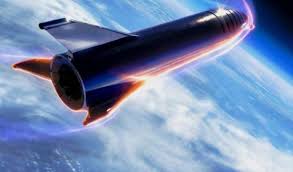
Breaking News
 HERE'S WHAT NO CASH ACTUALLY MEANS (Dave Ramsey re-post)
HERE'S WHAT NO CASH ACTUALLY MEANS (Dave Ramsey re-post)
 The Silver Shift: Why Stackers Are DUMPING 90% Silver & Buying SilverBitz!
The Silver Shift: Why Stackers Are DUMPING 90% Silver & Buying SilverBitz!
 Eye-bouncing - #SolutionsWatch
Eye-bouncing - #SolutionsWatch
 'Targeted, Antisemitism': 16 Dead, 38 Injured After Father & Son Terrorists Attack...
'Targeted, Antisemitism': 16 Dead, 38 Injured After Father & Son Terrorists Attack...
Top Tech News
 This tiny dev board is packed with features for ambitious makers
This tiny dev board is packed with features for ambitious makers
 Scientists Discover Gel to Regrow Tooth Enamel
Scientists Discover Gel to Regrow Tooth Enamel
 Vitamin C and Dandelion Root Killing Cancer Cells -- as Former CDC Director Calls for COVID-19...
Vitamin C and Dandelion Root Killing Cancer Cells -- as Former CDC Director Calls for COVID-19...
 Galactic Brain: US firm plans space-based data centers, power grid to challenge China
Galactic Brain: US firm plans space-based data centers, power grid to challenge China
 A microbial cleanup for glyphosate just earned a patent. Here's why that matters
A microbial cleanup for glyphosate just earned a patent. Here's why that matters
 Japan Breaks Internet Speed Record with 5 Million Times Faster Data Transfer
Japan Breaks Internet Speed Record with 5 Million Times Faster Data Transfer
 Advanced Propulsion Resources Part 1 of 2
Advanced Propulsion Resources Part 1 of 2
 PulsarFusion a forward-thinking UK aerospace company, is pushing the boundaries of space travel...
PulsarFusion a forward-thinking UK aerospace company, is pushing the boundaries of space travel...
 Dinky little laser box throws big-screen entertainment from inches away
Dinky little laser box throws big-screen entertainment from inches away
 'World's first' sodium-ion flashlight shines bright even at -40 ºF
'World's first' sodium-ion flashlight shines bright even at -40 ºF
Mass Production Rate and SpaceX Starship Costs

Space X started construction on two Starship prototypes in the month of May. SpaceX has a goal of producing two Starships every week in 2021. This would be 100 Starships built in 2021.
The estimated salary, benefits and overhead would be an estimated an average annual cost $200,000 for each SpaceX employees. This means that the 3,000 employees building Super Heavy Starships would be $600 million per year. If there were 100 Starship built each year and 20 Super Heavy Boosters, then each Starship would have about $4 million in labor and each Super Heavy booster would have about $10 million in labor. If the production rate was halved and the staff levels were the same then the labor for Starship would be $8 million and the Super Heavy booster would be $20 million. SpaceX is four times slower of the goal at the two per month construction rate. The labor for each Starship would be $16 million and the Super Heavy booster would be $40 million. SpaceX has not hired all 3000 staff at this point.
The steel is about $200 per kilogram. The dry mass of the Starship will be about 120 tons and the Super Heavy Booster will be about 300 tons. This would be $2.4 million for the Starship if most of the material was the steel alloy. The Super Heavy would be $6 million of steel.
If the steel and salaries are half of the total cost of the rockets then the unit costs at different production levels would be:
Two Starships per month would mean $37 million per Starship
One Starship per week would mean $21 million per Starship
Two Starship per week would mean $13 million per Starship



